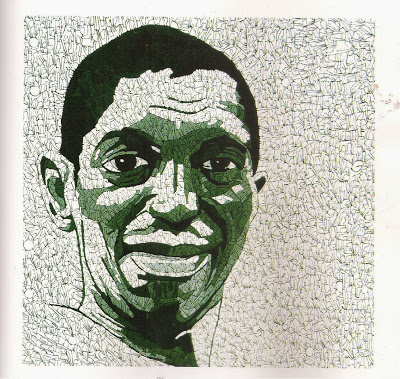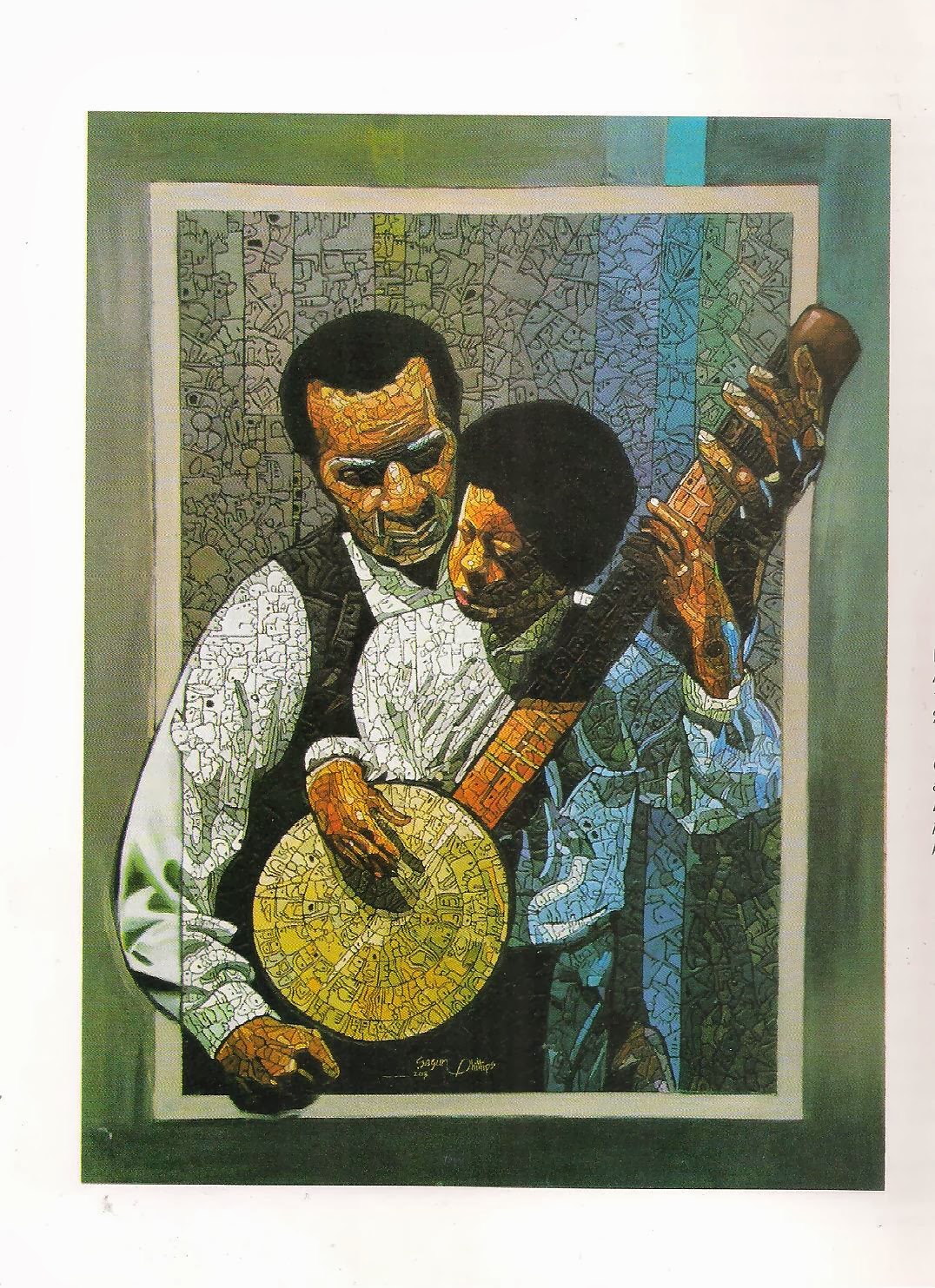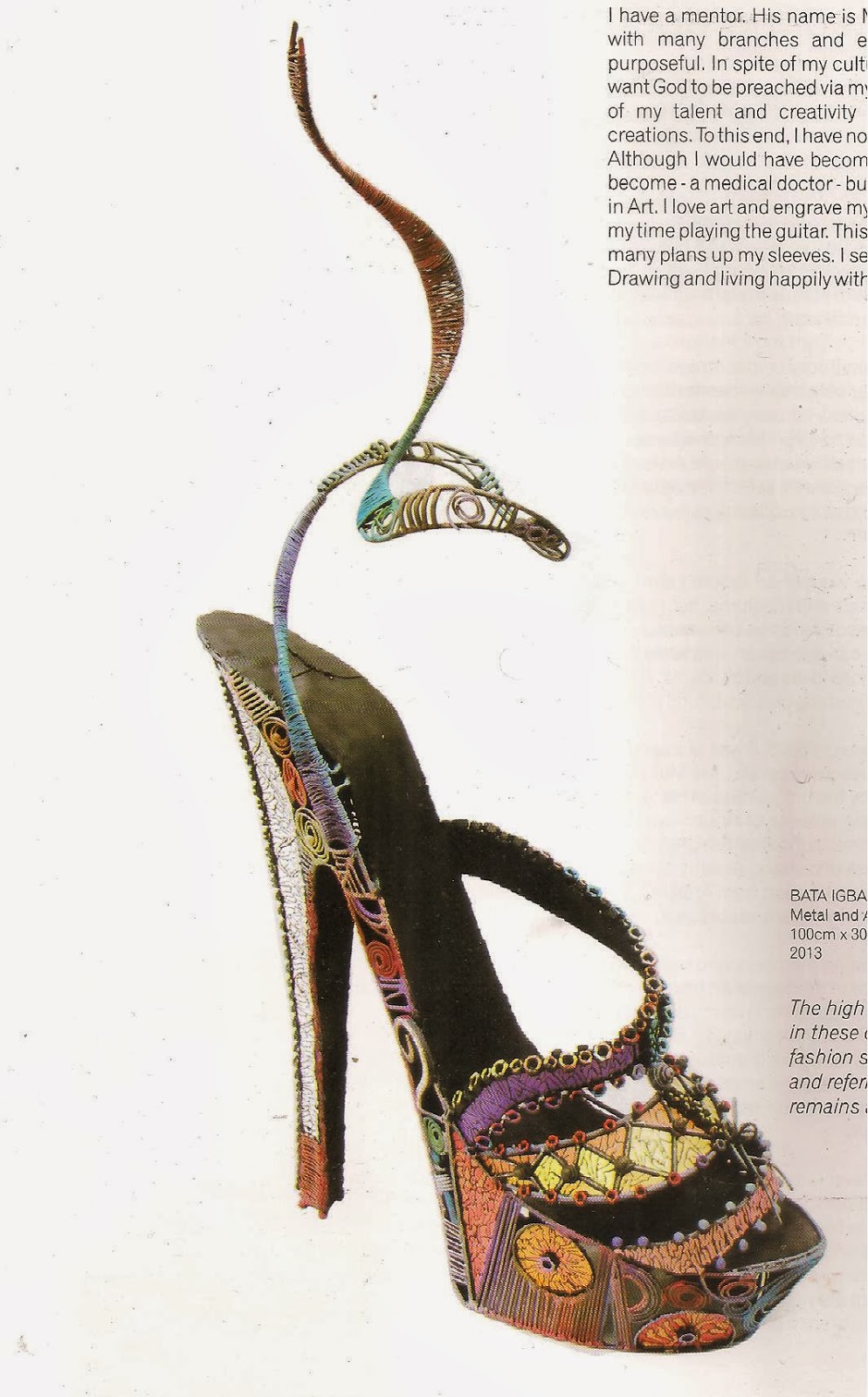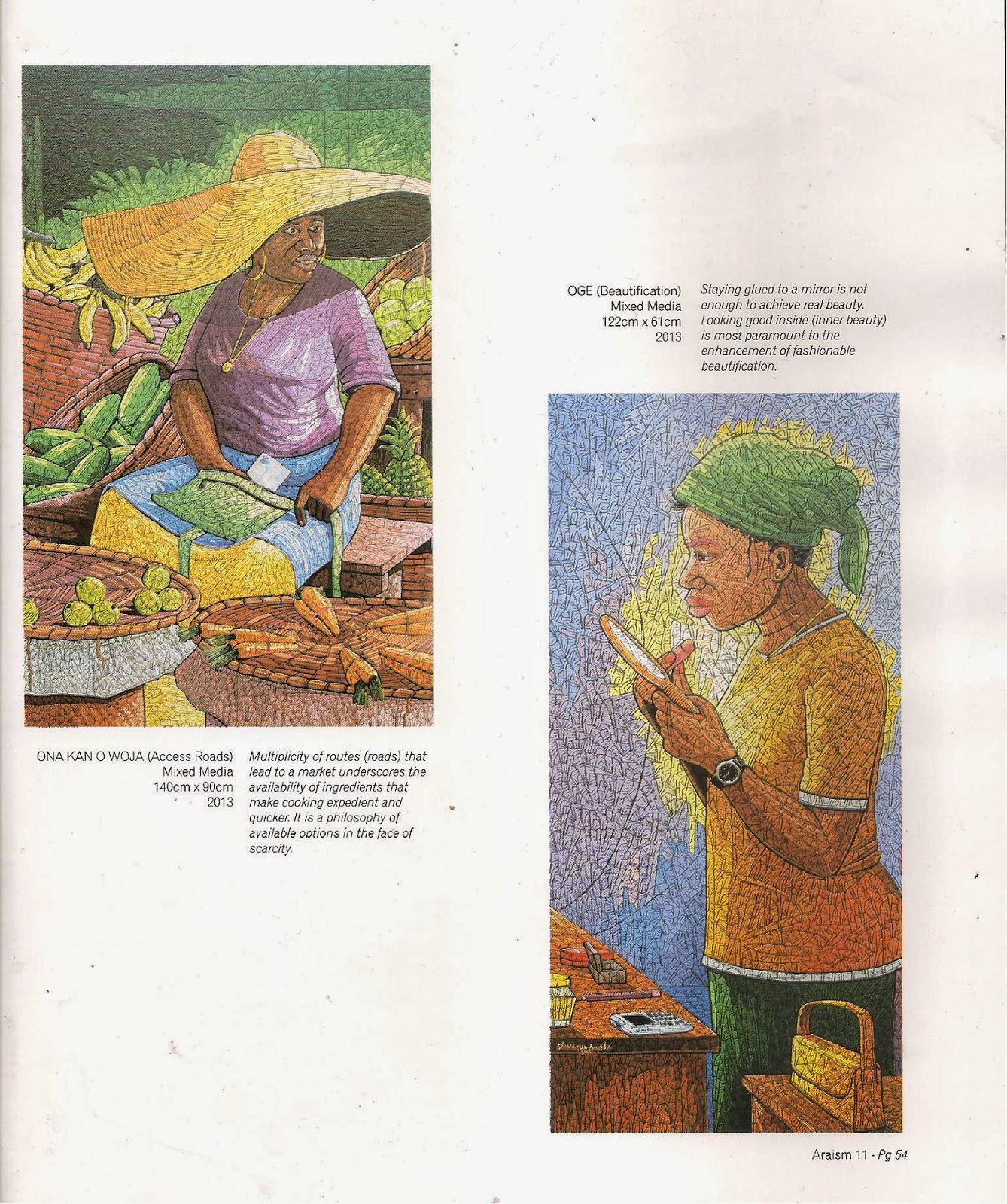‘Kiko Ni Mimo’ by Phillips
The beautiful continent of Africa has experienced many evolution in diverse areas. But it has also carried with it a sense of originality that continues to keep her identity.
In Nigeria, artistry cuts across different art genres and many artists have made a crest of the beauty and relevance of their works in the heart of African history.
Developing the painting technique called Araism, artist, Mufu Onifade, has expressed his own original craft in the art, which has a unique feature that makes the works appear as bits that have been carefully pieced together.
Since the establishment and formal launch of Araism by Onifade in 2006, he has groomed a number of young, vibrant artists who have continued to make Nigeria proud with the quality of their original works.
At the 11th edition of exhibition of works in the Araism fold that took place recently at Mydrim Gallery in Ikoyi, the body of works put together by a group of artists headed by Onifade was rich, historic and could
pass for a collector’s delight anyway.
pass for a collector’s delight anyway.
‘Bata Igbalode’
From start to finish, Araism tells the story of Africa in diverse settings. With Onifade’s bold and life-sized painting of master artist, Bola Kujore, the African spirit of giving honour to whom it is due, comes alive.
“ Africans are in the best position to tell their story as it should be told,” Onifade says, “ and the art of painting what we see and experience around us is just one wonderful way to do so.”
‘Ona kan O woja’ by Amodu
In Onifade’s collection are other works like ‘Adamu Orisa’( the pride of Eyo masquerade) and ‘Alajobi’(Ancestral lineage) that depict cultural beliefs, festivities and heritage.
Works by one of the younger artists, Dotun Popoola are chic with a fine blend of colours on metalwork. Some of the works; ‘Bata Igbalode’ and ‘Oba Eye’ are like a reflection of the commitment to keep an African identity in spite of the cultural juxtaposition.
No doubt that trade plays a vital role in the daily lives of people; it is expressed in pockets of the works by the different artists who have taken time to paint this important aspect of the African life as they have seen it.
Oluwanbe Amodu’s ‘Gbogbo ‘Gba Wazo’(Fixed Price) and ‘Ona Kan O Woja’(Access Road) show a typical market setting, what items are displaced and how traders fare as a daily affair.
In ‘Oge’ (Beautification), Amodu tells the story of beauty from an African perspective. He says beauty is beyond the outward looks, but more of the values that define a woman.
Though the artists were not limited to themes as they put their works together, Olusegun Phillips chose to define his works within the ambit of diligence as expressed in ‘Kiko Ni Mimo’(Practise makes perfect),
‘New Dawn’ and ‘New Market’.
‘New Dawn’ and ‘New Market’.
Also woven around Ara(wonders) was Abiola Akande’s work title ‘Arabolade(Wonders comes with wealth). According to him, the message behind the piece is for people to embrace the fact that there is an increased reward when people do things in unique ways.
His reflection on an aspect of Africa’s historic experience in slavery was well captured in one of his works, ‘Ecclesiastes 3v16’, which reads in part, “… and the wicked carried us away in captivity and required from us a song, but how long can we sing the lord’s song in a strange land.”
Other artists who showcased their works as well were Esther Ayodeji who had a fantastic work titled ‘The wise woman’; Bolarinwa Olowo’s collection had such titles as ‘Iyawo olele’ and ‘Ori ade’; George Egunjobi exhibited works including ‘Gwari Movement and Ilari.
Abolore Awojobi’s ‘Sogba’(mind your business) was aesthetically distinctive, just as his other work ‘Eko Akete,’ while Adeniran Odunmbo’s collection was built around the rural environment.
‘Iduro Akoni’(The Warrior’s stance), ‘Searching and Hoping’ were works exhibited by Aliu Azeez, and Tope Adebayo’s works on display included ‘Abo Oja’(the return) and ‘Ore Otito’( Best of friends), while Jonathan Imafidon’s ‘Ore Oninawo’ showcased the solidarity from loved ones as they wear Aso ebi(family outfit)
during social engagements.
during social engagements.
Importantly, the works, fully expressed in the Araism Movement, play a vital role in the identification of originality in a continent so blessed as Africa!




